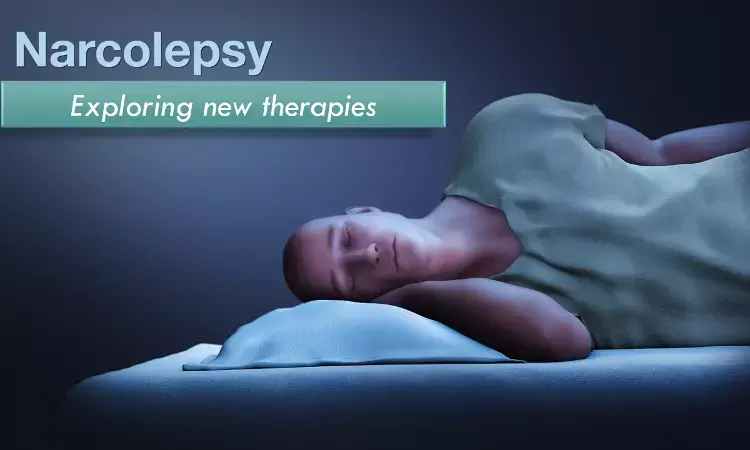- Home
- Medical news & Guidelines
- Anesthesiology
- Cardiology and CTVS
- Critical Care
- Dentistry
- Dermatology
- Diabetes and Endocrinology
- ENT
- Gastroenterology
- Medicine
- Nephrology
- Neurology
- Obstretics-Gynaecology
- Oncology
- Ophthalmology
- Orthopaedics
- Pediatrics-Neonatology
- Psychiatry
- Pulmonology
- Radiology
- Surgery
- Urology
- Laboratory Medicine
- Diet
- Nursing
- Paramedical
- Physiotherapy
- Health news
- Fact Check
- Bone Health Fact Check
- Brain Health Fact Check
- Cancer Related Fact Check
- Child Care Fact Check
- Dental and oral health fact check
- Diabetes and metabolic health fact check
- Diet and Nutrition Fact Check
- Eye and ENT Care Fact Check
- Fitness fact check
- Gut health fact check
- Heart health fact check
- Kidney health fact check
- Medical education fact check
- Men's health fact check
- Respiratory fact check
- Skin and hair care fact check
- Vaccine and Immunization fact check
- Women's health fact check
- AYUSH
- State News
- Andaman and Nicobar Islands
- Andhra Pradesh
- Arunachal Pradesh
- Assam
- Bihar
- Chandigarh
- Chattisgarh
- Dadra and Nagar Haveli
- Daman and Diu
- Delhi
- Goa
- Gujarat
- Haryana
- Himachal Pradesh
- Jammu & Kashmir
- Jharkhand
- Karnataka
- Kerala
- Ladakh
- Lakshadweep
- Madhya Pradesh
- Maharashtra
- Manipur
- Meghalaya
- Mizoram
- Nagaland
- Odisha
- Puducherry
- Punjab
- Rajasthan
- Sikkim
- Tamil Nadu
- Telangana
- Tripura
- Uttar Pradesh
- Uttrakhand
- West Bengal
- Medical Education
- Industry
Oral orexin agonist shows promise for narcolepsy but hepatic damage signals red flag

Current management of narcolepsy involves polypharmacy for most patients, often with incomplete control of symptoms, profound impairment of quality of life, and unwanted adverse effects. Type 1 narcolepsy is characterized by loss of orexin producing neurons in hypothalamus. These observations led to the development of orexin antagonists to treat insomnia and orexin agonists to treat narcolepsy type 1 and possibly other disorders of hypersomnolence.
In the recent issue of the NEJM, Dauvilliers et al. report the results of their phase 2 trial of an oral OX2R agonist (TAK-994) for the treatment of narcolepsy type 1. They randomly assigned 73 patients to receive TAK-994 at a dose of 30 mg, 90 mg, or 180 mg twice daily or matching placebo for 8 weeks. The primary end point was the change in sleep latency on the 40-minute Maintenance of Wakefulness Test (MWT), which tests the ability to stay awake under soporific conditions in the daytime, a function that is greatly impaired in narcolepsy.
Authors observed that patients improved from being severely affected (sleep latency of approximately 4 minutes in the placebo group at 8 weeks) to having completely normal sleep-latency levels with the drug.
For the three doses of the drug that were tested, patients maintained alertness under experimental conditions for 31 to almost 40 minutes in a seemingly dose-related manner, with times of more than 30 minutes considered to be typical for healthy persons.
The red flag!
Eight patients had ALT or AST levels that exceeded predefined thresholds for discontinuation of participation in the trials, including three patients who had cases meeting Hy’s law criteria; together, these hepatotoxic effects led to the early termination of the trials.
Hope still lingers!
“The outcomes described in the current report may be seen as a backward step because of the decision to terminate the trial. However, the impressive efficacy is a major step forward in helping patients with narcolepsy type 1”, argue Marshall et al in an accompanying editorial. Patients improved from being severely affected (sleep latency of approximately 4 minutes in the placebo group at 8 weeks) to having completely normal sleep-latency levels with the drug. The drug appeared to be more effective than other promoters of wakefulness, such as solriamfetol, and many times as effective as modafinil or pitolisant, although no direct comparison can be made.
In the meantime, newer orexin agonists, if found to be safe, have the potential to improve the quality of life in patients with this disabling condition and change the current suboptimal polypharmacy approach for narcolepsy type 1.
Source: NEJM
1. DOI: 10.1056/NEJMoa2301940
2. DOI: 10.1056/NEJMe2305779
MBBS, MD , DM Cardiology
Dr Abhimanyu Uppal completed his M. B. B. S and M. D. in internal medicine from the SMS Medical College in Jaipur. He got selected for D. M. Cardiology course in the prestigious G. B. Pant Institute, New Delhi in 2017. After completing his D. M. Degree he continues to work as Post DM senior resident in G. B. pant hospital. He is actively involved in various research activities of the department and has assisted and performed a multitude of cardiac procedures under the guidance of esteemed faculty of this Institute. He can be contacted at editorial@medicaldialogues.in.
Dr Kamal Kant Kohli-MBBS, DTCD- a chest specialist with more than 30 years of practice and a flair for writing clinical articles, Dr Kamal Kant Kohli joined Medical Dialogues as a Chief Editor of Medical News. Besides writing articles, as an editor, he proofreads and verifies all the medical content published on Medical Dialogues including those coming from journals, studies,medical conferences,guidelines etc. Email: drkohli@medicaldialogues.in. Contact no. 011-43720751


